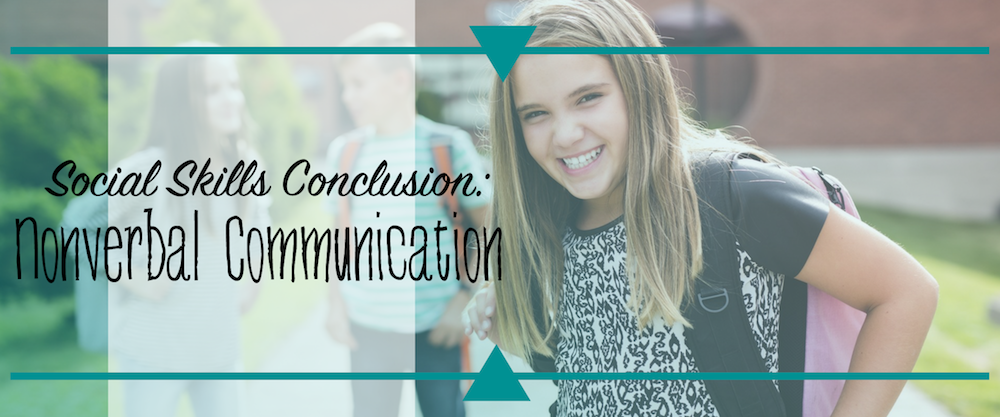Navigating the ins and outs of nonverbal communication can be quite challenging for some young people. As friend groups change, teachers lay out somewhat confusing expectations, and children watch adults argue and resolve conflict, young people can easily get lost – or further frustrated – by the lack of clear-cut, easily understood communication. This particular social skill may produce extra growing pains, particularly because the boundaries and societal norms of nonverbal communication are far more ambiguous than most children realize. You may have begun to notice certain changes in your child as they try to figure out ways to communicate their thoughts, feelings, or wants, or you might be seeing behaviors that are out of character for your son or daughter (e.g, kicking or fighting with others, withdrawing from friends, etc.).
Nonverbal communication takes many forms: giving a cashier a quick smile, putting an arm around a friend who is grieving, walking or standing further away from someone you don’t want to engage with, or leaning into a particularly good conversation. Culture and social norms play an equally important role in the matter: while direct eye contact in Western cultures is often welcomed, many non-Western countries, like places in the Middle East, view it is more inappropriate. Some nonverbal cues can have multiple meanings (e.g., a smile as genuine happiness, or hidden passive-aggressive anger), while others may land you in trouble given the circumstance (e.g., touching someone else, even on the shoulder or arm). See how easily children can become confused or discouraged if their attempts at interacting with others don’t go as planned?
Ample time for social exploration as a young person is critical for later cognitive development. While your parental supervision – often times as a teacher, guide, and mentor for your child – is equally helpful, in many cases, children need to sort out their friend groups and practice their social skills independent of an adult. Sometimes, your child may complain about being “bullied” by another peer, who in fact was simply ignoring their advances as a way to communicate “Leave me alone.” Your child may try to hug a shy or sad classmate, purely to show empathy, only to be pushed away or yelled at for being “annoying.” Other times, your child may complain that they are never called on in class and that they feel “stupid,” when the teacher is in fact trying to generate more participation across the room.
There are a few concrete steps you can take as a parent to help your son or daughter hone this social skill. Practice communicating with body language, silence, and facial expressions in the home – and review with your child what each person was trying to “say.” Explain to your young one what healthy boundaries are like, and that sometimes, a crying friend may truly want to be left alone. Most importantly, when your child seems especially discouraged about a botched social interaction, love on them relentlessly and ensure that they feel safe and confident to try again.

